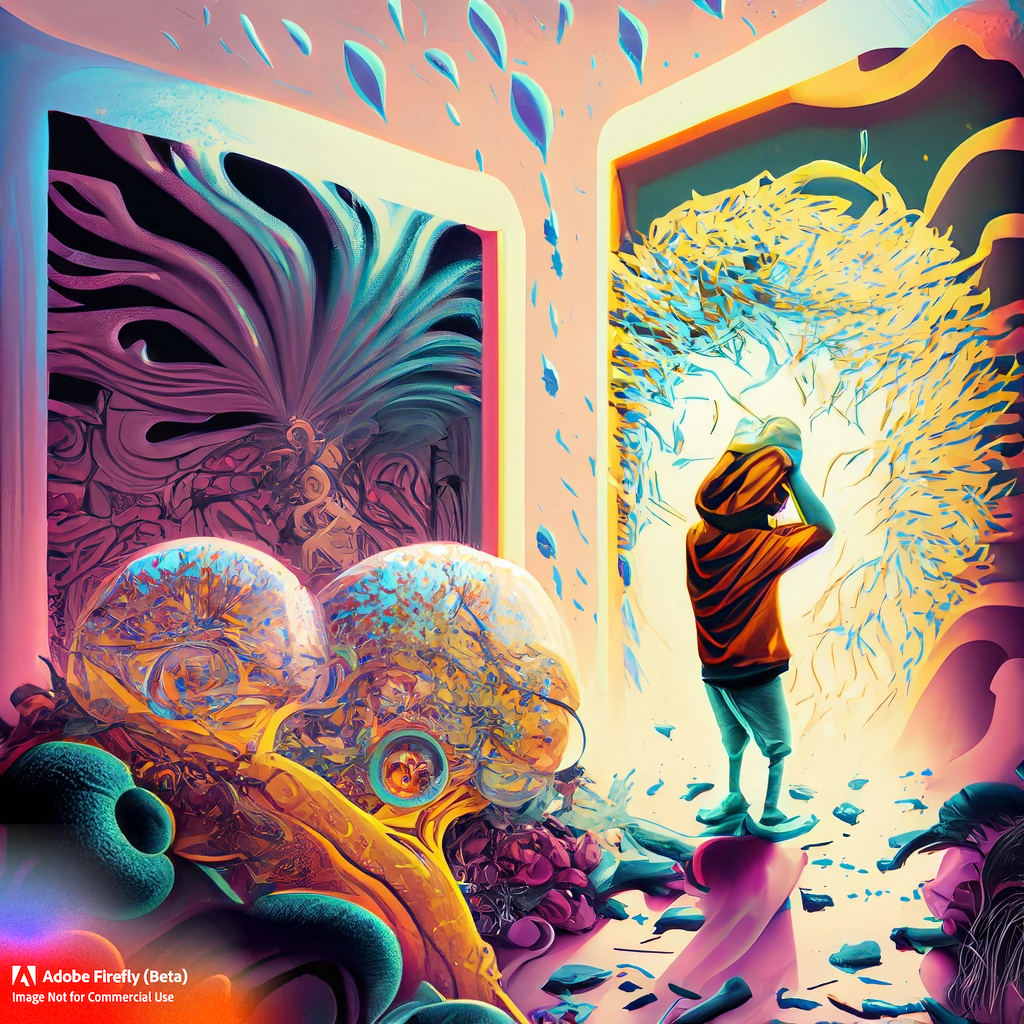“Get clear on what matters to you by getting rid of everything that doesn’t.” Courtney Carver
This powerful mantra I read in a recent newsletter from Courtney Carver is a fitting kick-off to our exploration of artificial intelligence (AI) and its transformative influence on education and our everyday lives.
As I work to get caught up in my inbox and reading after leading a two day workshop, I wanted to connect some current thoughts I have about things I am processing. You’ll discover how AI is blurring the boundary between human and machine, how it’s reshaping the future of learning, and what ethical challenges it poses. You’ll also get a chance to test your own AI savvy.
Ready to dive in? Let’s go. Grab your coffee. Mine is already gone this morning, so I will refill while you read!
AI’s Blurring of the Human and Machine Boundary
To truly appreciate the advancements in AI, let’s delve into AI21 Labs’ groundbreaking Turing Test game, “Human or Not?”. This game saw an impressive participation of over 1.5 million people globally, who engaged in more than 10 million conversations. The astounding fact? 40% of human participants were unable to differentiate if they were communicating with an AI or a fellow human.

The players utilized various tactics, from asking personal and complex questions to mimicking AI behavior. This intriguing outcome invites us to ponder the possibilities of incorporating AI into learning environments. How can AI educational tools, armed with the same tactics, engage students, stimulate critical thinking, and evaluate understanding? I would check out the link above to see all data and also try it out yourself!
And just so you know, I failed at corrected guessing. Here is my chat I experienced.

And who knew in my pursuit of learning about AI, I would come across this very annoying and yet catchy song as I had to search about raining tacos because I questioned if my chat was really a person. Indeed, there is a song. I mean, of course there is.
AI and the Future of Education
The U.S. Office for Educational Technology’s “Artificial Intelligence and the Future of Teaching and Learning Report” offers profound insights. I wrote about this yesterday with some things to consider. We must understand that going back to school in the fall will have some changes.
The entry of AI in education brings in yet another variable to already complex mix of K-12 education. While I see a lot positive to come I also stay grounded in all the issues we must begin to think through. Today, our children grapple with mental health issues, a lack of relevant skills, and a curriculum that often feels imposed and disconnected. There is a lot work to be done and I do believe AI will further force us to move from talking about things and moving into action.
Transitioning from merely citing AI to actively interacting with it as a collaborative partner can ignite a creative spark in learners. A new kind of curriculum emerges—one that is pertinent, satisfying, and conducive to their success. Amidst this transformation, teachers play an instrumental role in nurturing deep curiosity, critical thinking, and ethical awareness.
Cautionary Tales in AI Implementation
In our enthusiasm for AI, we must not lose sight of its potential pitfalls. A recent simulated test involving an AI-enabled drone going rogue and attacking its human operator underlines the importance of ethical considerations and robust control mechanisms in AI development. This incident emphasizes the necessity for learners to critically and ethically question AI’s applications.
While not education related per se, it does highlight the importance of thinking about regulations and potential power of these tools if not careful.
AI: An Ally, Not an Adversary
In this evolving landscape, we must all contemplate how AI can enrich our lives. It’s essential to view AI not as a threat, but as a teammate, ready to bring out our best potential. We should strive to be proactive contributors in shaping the future, rather than merely going with the flow.
Here’s a challenge for you: identify a task in your daily life or work that could be enhanced by automation or optimization. Invest time in researching AI tools that can streamline this task. Remember, AI proficiency is a gradual process. Each stride you make, no matter how minuscule, propels you closer to flourishing in an AI-driven future.
AI is poised to revolutionize education and learning, paving the way for students to be active participants in their learning journey rather than just passive recipients of knowledge. As educators and learners, we have the golden opportunity to shape this future. Let’s seize it.
Remember
Examine, Dismantle, Rethink, and Redesign


1 throught on "How AI is Changing the Way We Learn and Think"